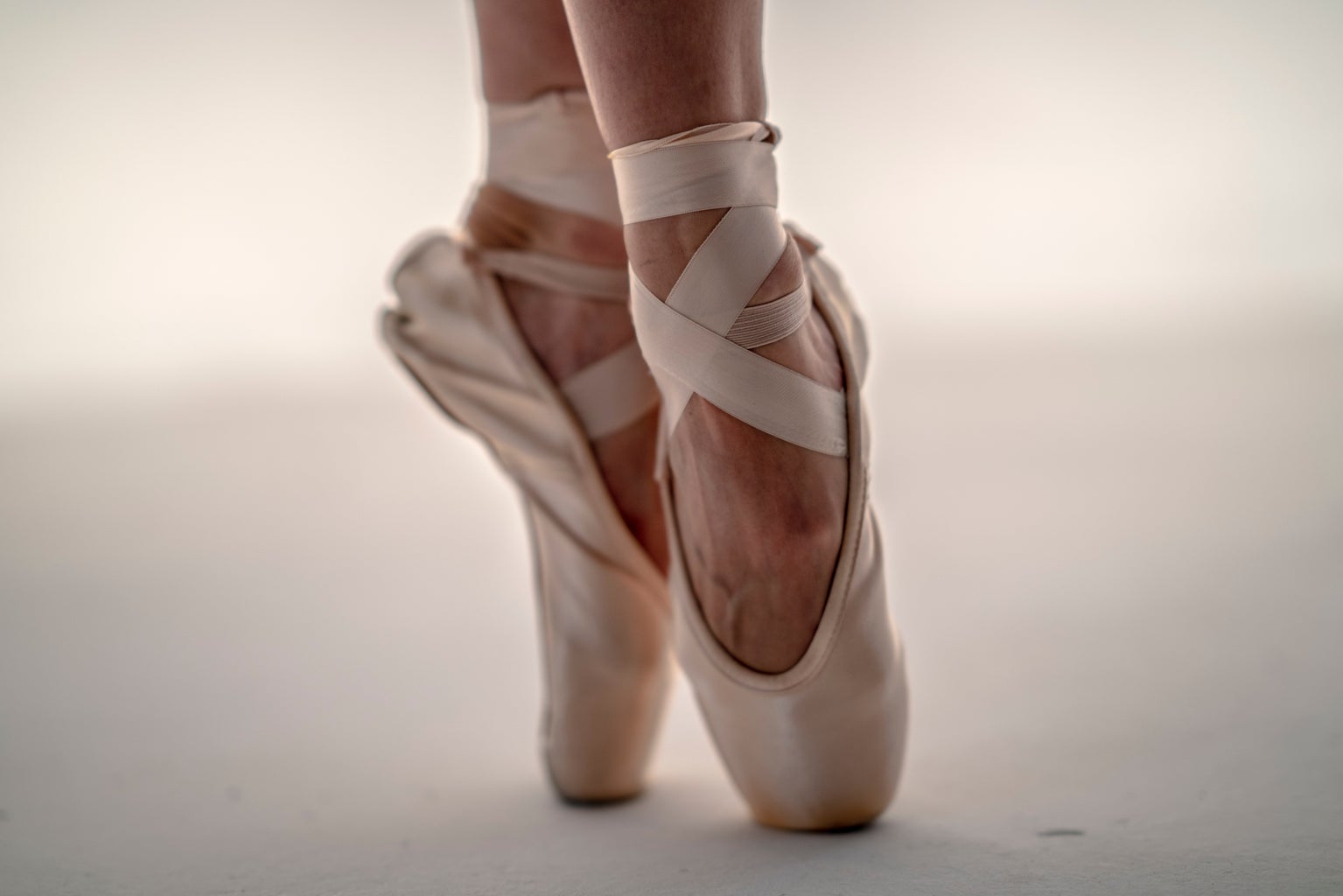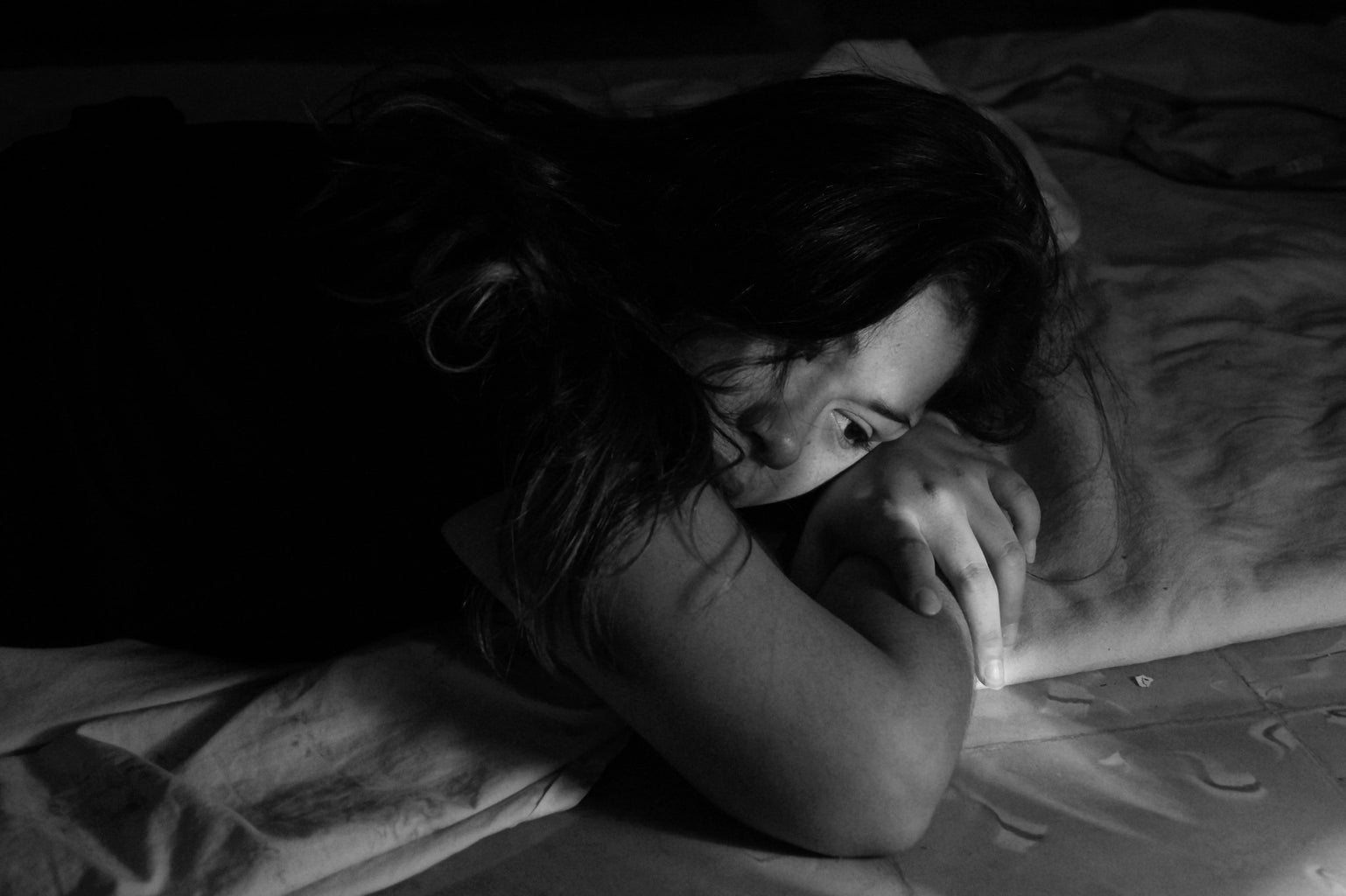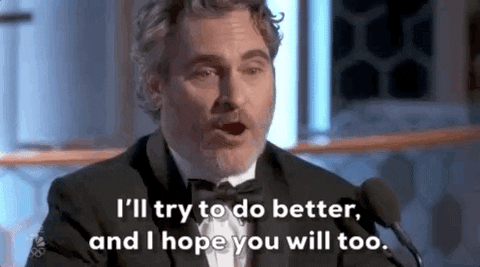After two failed spin-offs, it seemed the third time was the charm for the Pretty Little Liars universe. Original Sin, PLL’s 2022 HBO Max reboot, is witty, scary, well-written, visually stunning, and surprisingly actually good. It uses an (about damn time) timely female-gaze perspective and brings a horrific twist to the already creepy “A” antagonist. And while, the positives, in a rare occurrence, far out way the negatives for this reboot, there is one negative from Original Sin that can’t be brushed off: its Scoliosis representation.
I was originally excited when Original Sin was announced: Pretty Little Liars was a show that I was obsessed with in middle school while I was in a back brace, and in high school during my spinal fusion surgery recovery. During this time, PLL was a show that helped me escape my pain, something that gave me hope and something to look forward to. So, personally, it felt full circle when I learned that the reimagining had a Scoliosis storyline—especially since the original show helped me through my experience with Scoliosis.
In the pilot episode, we meet Faran, a stunning and dedicated ballerina. Her storyline deals with being a Black girl in a predominantly white sport, and she often is the target of microaggressions and has to work extra hard to prove that she belongs. But her race isn’t the only thing holding her back: Her Scoliosis, a medical condition that deals with the abnormal curvature of the spine, is also a hurdle for her ballet ambitions.
As a Scoliosis survivor, the excitement of having Scoliosis representation in the reimagining of a show that helped me during my own Scoliosis journey was palpable. I was counting down the days. Finally, a TV character that could share how annoying it is to be stopped by TSA like clockwork every time I have to go on a plane, and can actually relate to my blunt jokes about having a spine that—without metal rods— looks like the first letter of my name (to avoid scrolling back up to my name, that letter is S). However, I was left absolutely horrified by their portrayal of the condition I have struggled with for the majority of my life.
I couldn’t, I can’t, imagine watching it as my middle school self. It would have left me in tears and more ashamed than ever. And I can’t imagine being a young girl watching it now.
In the pilot, I was jarred by a scene that featured a terrified-looking girl in a leather neck brace, which isn’t even used anymore. In a conversation with her ballet teacher, Madame Giry, Faran is essentially told that she has to hide her Scoliosis in order to be a successful ballerina. But it’s not given as a considerate recommendation, but as blackmail to keep Faran in line.
Young girls with Scoliosis are insecure. There are links to anxiety, depression, body dysmorphia, and self-esteem issues in young female Scoliosis patients. In my experience, I have dealt with all of it. Like Faran, it was my big dirty secret throughout my middle school back brace years. However, after I got my spinal fusion surgery, I found confidence in having Scoliosis. I no longer felt like I needed to keep it a secret. This arc would be great for a character as outspoken and confident as Faran if her Scoliosis was ever mentioned or shown again after this initial conversation with Madame Giry, but it wasn’t. No scenes of her taking painkillers, stretching her shoulders, or rubbing her neck in pain.
This is a terrible message. Scoliosis is a real disease. A disease that affects every aspect of a person’s lifetime health. Their mobility. Their strength. Their confidence. Their sexual health. Their physical health. Their mental health. All of it leads back to their spine. All of this has the potential for the nuanced storytelling Original Sin is already showing with the character’s storylines. So, why is Faran being pushed into the background?
Well, this was the case for the first 5 episodes of Original Sin. Episode 6, which premiered this past Thursday, brought Faran’s Scoliosis to center stage (pun unintended). The episode, entitled “Scars.” was based around a representative from Faran’s dream ballet school, the American Ballet Theatre (ABT) coming to Millwood to watch their production of Swan Lake.
When in a consultation for her costume, Faran asks the designer to add mesh to her ensemble costume to cover up the Scoliosis scar that goes all the way down her back (which by the way, if she had the surgery at 8, the scar would not be that big because you grow a LOT between the ages of 8 and 16, so the makeup artists clearly didn’t research Scoliosis scars either). Kelly then proceeds to out Faran’s scoliosis to the ABT representative, however it backfires. Faran’s skills are even more impressive to the rep despite her limitations and medical history.
Later, Corey, Faran’s mom, encourages Faran to see a plastic surgeon to get rid of her scar. After a consultation, Faran decides not to get the apparently invasive surgery (thank goodness, what a terrible message for young girls, and hasn’t Kylie Jenner done that enough for the next decade?), much to her mom’s dismay.
Then, Faran is told she’d be replacing Kelly as the lead (aka the Black Swan). She starts to rehearse with her crush Henry. Henry asks Faran about her scar and she explains her Scoliosis journey, which began when her ballet teacher noticed her spines curvature during class. She was diagnosed with Adolescent Idiopathic Scoliosis at 6, back braced afterward, received spinal fusion surgery at the age of 8 and was braced again after the surgery. It is unclear when she stopped wearing a brace, but as she wore a skintight outfit in her first scene in the pilot, it’s not within what we’ve seen on the show.
Now, as someone who has Scoliosis, been back braced and received the same surgery, I was shocked by how little the writers researched this. Yes, Idiopathic Scoliosis can happen as an infant (between birth and age 4), a juvenile (ages 5-9, the age Faran was) and an adolescent (age 10-18), which the adolescent age group is the most prominent for multiple reasons (it is also late in life Scoliosis that is common with Osteoporosis and the elderly as well as Scoliosis caused by accidents that require spinal fusions like in Molly’s Game or what happened to Gloria Estefan). However, the main reason is that this is the time where surgery usually occurs (for reference, I was diagnosed at 12, braced from 12-14 with the expectation that I would have surgery at around 18 before starting college, however, I was so bad that I needed surgery way sooner than expected, however, I was done with puberty by 16, so it worked out). It also matters what degree your curvature is. While I was in a back brace, I was in the 40s and once I stopped wearing it I got over 50, which is when surgery is most necessary (this is when different levels of severity come into play). Now, after a six-hour growth spurt (Pre-surgery I was 4’11 and post-surgery I am now 5’1 and a half) I am at a somewhat normal 18-degree curve and have an enviable posture.
Surgery should only be recommended when you are no longer pubescent and when your curve is over 50 degrees (I qualified for both at 16, and a note of advice: don’t hike a mountain for three days after getting out of a back brace). Around 6-8 million people struggle with Scoliosis in varying degrees of severity (personally, I am the most severe of anyone I have ever met with Scoliosis). Scoliosis is more prevalent in young women. Due to puberty and other complexities of women’s bodies (like menstruation), surgery usually waits until after the patient is done with puberty. During this time, they are usually braced to help the spine get better or at least not get any worse.
Later on in the episode, “A” reveals to Faran that her surgery wasn’t necessary and was not recommended at that time by doctors, who accurately thought it was too soon. Instead, Corey went ahead and decided that her daughter should have surgery despite doctors’ recommendations to hold off.
Now, I will admit, Faran’s reaction was completely understandable, especially as someone who has dealt with it. When I was in a back brace, I, too, felt like it was my big dirty secret. That if anyone found out, my life would be over. In fact, I quit dance because of my same and moved towards the less physically demanding performance outlet of acting instead. Ballet is also frowned upon by doctors for Scoliosis patients who are post-surgery, and if you do it, you should modify it (my doctor actually recommended swimming as a good activity for patients, but I am no Emily Fields. However, the debate of Emily should’ve had the Scoliosis storyline instead of Faran is for a different article). It wasn’t until after my surgery, which forced me to grow up and matures faster than most of my peers, was when I stopped hiding my Scoliosis. I didn’t shout it from the rooftops, but if the topic came up or I did need help because of it, I wasn’t secretive about it anymore. I found confidence in it and began to be outspoken and empowered by it.
Faran reacts by telling the costume designer to not add mesh to hide her scar when altering the Black Swan costume to fit her. She takes a new photo for the show’s bio wall that puts her scar on full display (just like Princess Eugenie did with her scar at her Royal Wedding), which is arguably the best and most inspiring moment of this entire storyline. However, instead of using it as a way to empower herself, she calls out her mother (rightfully).
In the following episode, also out now, Henry and Madame Giry encourage Faran to see another doctor, who tells her to stop doing ballet and puts her in a brace once again. Faran and Corey also have a confrontation about the situation, which ended the last episode with Corey being so distraught over Faran’s newfound empowerment that she crashes her car. Faran reminds Corey how she’s repeatedly ignored her complaints of chronic pain. In return, Corey doesn’t apologize or express any remorse for her decision to give Faran the spinal fusion prematurely and instead blames Faran for her accident and ending up in a wheelchair temporarily.
One) why was this necessary? This inability Corey has to acknowledge her being at fault for the situation is awful! And two) now they are telling patients not to be honest with their parents about their pain. That’s horrible! Especially when teens have a hard enough time being honest already with their parents about something as juvenile as a bad grade. Faran’s reaction was at least worthy and empowered. She responded by telling her mother that she will not let her Scoliosis or her mother’s terrible decision define her for the rest of her life (go, girl!).
While the writers are admirably not dropping the Scoliosis storyline, there is so much more to explore with this disease, rather than using it as a device for the issues of a mother and daughter (which could’ve been explored literally any other way). At the very least, they could have researched the fairly well-known treatment of being braced rather than choosing style-over-substance (even for Riverdale’s Roberto Aguirre-Sacasa’s beloved timeless, smokey aesthetic, this was not a worthy aesthetically pleasing sacrifice).
Now, there’s no denying that Faran didn’t deserve to have the surgery against doctors’ orders and have that hidden from her. Corey had no right to do that to her, and then have the audacity to ignore her complaints and pleads of chronic pain (relatable!). Faran and every woman deserve bodily autonomy (@ the Supreme Court). There is also no denying that his disease which prominently affects teenagers greatly affects their relationships with their parents. My internal struggles made me feel even more distant from my parents, but my recovery brought me closer to them. In part, the parents’ involvement in this storyline in Original Sin makes sense and is realistic. However, it’s the extra dramatization involving betrayal and secrets that were distracting and very alarming. Scoliosis is a complex disease on its own. After all, it affects your spine, one of the most central parts of your body. Due to my Scoliosis, I have mental health issues, physical health issues, sexual health issues, and not to mention self-esteem issues. It’s complex enough without involving Corey’s betrayal in the mix. Frankly, it wasn’t necessary and ruined an otherwise great representation of Scoliosis (despite the scary vintage back brace).
Instead, the writers could have gone in the direction of Kelly outing Faran’s Scoliosis as revenge. A similar situation happened to me, and while at first, I was horrified, I became empowered by it. Faran could have had a similar arc. Or they should have explored her confidence within her body through her budding relationship with Henry. Corey and Faran’s animosity was already established by Corey working away from home, her Scoliosis didn’t need to be a device to add extra drama to that situation.
The writers also chose to make her scar the biggest aspect of her Scoliosis storyline. Her chronic pain is secondary and everything else albeit mental health, mobility, etc. nonexistent. Like many girls, Faran is on a quest for perfection. This quest has been instilled in her by her mom. And in that quest, Corey scarred Faran. But a scar is not the only lingering side effect of Scoliosis. Some women have a difficult time doing cardio because their curvature causes lung compression. Some women can’t put in tampons because their uneven spine causes them to have an uneven pelvis. Some women have a such bad body image that they develop eating disorders and body dysmorphia. Those scars are way more impactful and long-lasting than the ones you see, but like anything with society, if you can’t see it then it gets pushed away, never talked about. People have scars. From kidney transplants and C-sections. Who really cares? Yes, it’s an insecurity that deserves to turn into a sense of empowerment of course, but there are more important issues in the world and of this disease than having a visible scar. What about the things people don’t see? The internal struggles? Not all people have a singular disease that causes endless lingering side effects for the rest of their life. Talk about that.
Yes, scars are an imperfection, and in a world filled with perfect influencers and filtered Instagram feeds, imperfection is an important thing to accept, but using Scoliosis to preach that is not the way to do it, especially when there are way more issues to dissect. Everyone has imperfections. Scoliosis doesn’t make you imperfect even if your spine isn’t stick straight. Scar doesn’t mean you are a failure and having chronic pain doesn’t mean you are weak. This lesson is the only good outcome of Faran’s storyline. At least it’s inspiring and can be translated through a variety of circumstances.
However, this quest for perfection storyline can be transferred to many other ideas, take Spencer Hastings stealing her sister’s essay and winning an award for it in the OG PLL as an example. The Scoliosis aspect of this storyline feels very much thrown in there for dramatic effect. Is a unique way to tell that story that hasn’t been done before. However, it’s not written in a nuanced or accurate way. That basically disregards the whole storyline entirely. I repeat; this is not okay.
Now, this is an insult to the actress. Zaria, who also starred in the Oscar-winning short film Two Distant Strangers, has portrayed Faran very effortlessly, and specifically plays Faran’s pain fairly well. She and Noa are actually my two favorite liars in Original Sin. It’s clear that she understands the mental pain of having physical pain and how frustrating it is when people don’t believe that you are in constant and chronic pain just because they can’t see it with their own eyes. Just because you can’t see that someone is in pain, just because they aren’t complaining about or constantly rubbing their muscles, doesn’t mean they aren’t in pain. They are. Just at some point, it just becomes a daily part of your life like brushing your teeth or making your bed. Zaria has clearly put in the work and did the research (more than I can say for the writers). She tries her best to put herself in a patient’s shoes with empathy and care (although her literal perfect posture shows that she has not experienced severe Scoliosis herself).
In the penultimate episode, Faran is seen embracing her new confident life, From wearing her natural hair instead of caucasian-esque straight hair to transitioning from dancer to choreographer. She is also seen wearing a (finally) accurate brace. However, it’s a so-called “soft brace”, used for some patients post-surgery and patients with far less severe curvatures (I never had to use one). This brace looks like a torso version of a wrist or ankle brace and is worn over your clothes instead of over an undershirt and under your clothes. However, this newfound accuracy falls flat, because the whole storyline is used as a device instead of a fully realized arc and the original back brace young Faran was shown in was inaccurate and terrifying. This brace now feels like the writers compensating for their past inaccuracy, when that feels even more icky and ingenuine. If they were accurate from the beginning and had Scoliosis as the focus of Faran’s arc instead of her mom’s betrayal, then this would feel satisfying and refreshing instead of forced and phony.
This isn’t the first Scoliosis representation that has been built up, only for it to fall flat. Ryan Murphy’s Scream Queen features Lea Michele’s character Hester in an old-fashioned neckbrace due to her severe Scoliosis. It’s used as a punchline for jokes rather than a nuanced story that Murphy has shown many times he’s capable of on his shows Glee and Feud. It is later revealed Hester was faking it the whole time, rendering the entire joke unnecessary. There are smaller storylines on The Mighty Ducks and an episode of Grey’s Anatomy starring Mae Whitman. Scoliosis was also used as the punchline for jokes in That 70’s Show and Glee.
These are two aspects that Original Sin and Scream Queens have in common. The first is that they are both horror television shows. This in itself represents Scoliosis as an abnormal, distorted disease that is horrifying and deserves to be kept secret, when that is not the case at all. It is painful and valid, both pre-surgery and post-surgery, and it deserves to be talked about in nuanced ways just like LGBTQ+ representation, religious representation and racial minority representation. Horror shows being the only sources of media and entertainment to showcase Scoliosis makes it seem scary and creepy when patients already have plenty to be scared of. For many, this huge surgery is their first ever surgery, it was for me, without it being used to drive a horror storyline. It makes viewers with little knowledge of the disease ignorantly scared, thus perpetuating the stigma. It also tells current Scoliosis patients that their disease is scary and should be something to be ashamed of. It’s so important to normalize things like Scoliosis, instead of perpetuating the fear and stigma. With so many anti-shame movements recently like slut-shaming, food-shaming, body-shaming, and fat-shaming, this is a huge disappointment. Having Scoliosis isn’t a horror story, it’s a survivor’s story, and it deserves to be told that way.
The second thing Original Sin and Scream Queens have in common is that they both use dated neck braces. This is incredibly damaging. These braces are made of hard leather and metal that go all the way up to your neck and haven’t been used since the 20th century. Braces today are made of prosthetics, come in different colors and patterns, and go underneath the patient’s clothes over an undershirt. It’s obvious that they chose this style-over-substance approach for maximum terror and to match the show’s overall 70s and 80s-inspired vintage aesthetic, which has become expected from all Roberto Aguirre-Sacasa’s projects, like Riverdale and Chilling Adventures of Sabrina. And if it wasn’t a clear production case, then it just shows how little research the producers actually did and that they have no writers with Scoliosis in the writer’s room (it’s worth noting that Riverdale actress Madelaine Petsch has moderate Scoliosis). But seriously? Would it really be that distracting and out-of-place if they used an accurate back brace instead of one that was extinct but matched the aesthetic? This lack of accuracy in terms of the back brace is honestly just inexcusable
This inaccurate portrayal is also causing ignorant viewers to meme Faran’s storyline on Twitter. You don’t see fans making memes about Imogen’s pregnancy, Tabby’s assault, Noa’s arrest, Mouse’s trauma or the racism Faran experiences, but somehow it’s okay to meme her Scoliosis? Absolutely not! This just proves how little people are educated about Scoliosis and how conversations about Scoliosis and the disease itself need to be normalized!
Zaria has expressed on her Twitter how much responsibility she felt when approaching this storyline. Many fans with Scoliosis have praised her performance and thanked her for finally representing their Scoliosis struggles on screen, as well as empowered them to not be ashamed of their scars. In response, she expressed gratitude, expressed how inspired she is by them and praised their bravery. Now, yes, I feel great that Scoliosis is finally getting told on screen in a somewhat nuanced way (mostly due to Zaria’s performance, not the writing). But it’s the inaccuracy and lack of research, as well as using this already complex disease as a (horror) story device rather than showing the intricacies of the disease itself that bothers me. It’s as if Scoliosis survivors are accepting the bare minimum, instead providing constructive criticism on how to represent Scoliosis more authentically. We have survived an ordeal most people can’t even fathom. We shouldn’t have to settle for the bare minimum (when honestly the bare minimum would be using an accurate back brace instead of a neck brace from circa 1979).
As much as the Scoliosis representation in PLL: OS isn’t great, it’s still a step in the right direction. It’s better than using it as the butt of a joke. With any kind of representation, it takes time for it to get fleshed out in a non-stigmatized, non-stereotypical way. Some representation is better than no representation at all. We have come a long way, but we still have a looooong way to go for more nuanced, accurate and complex Scoliosis representation. With Original Sin three-quarters of the way through their first season, let’s hope that the rest of their freshman season, and their hopeful Season 2, give Faran’s character the opportunity to find empowerment in having a past with Scoliosis and diving deeper into the other issues that arise with having Scoliosis instead of using it as a device between her issues with her mom. Let’s also hope that they give current patients someone to look up to and relate to in a positive way rather than in a falsely-empowered, shameful way. At the end of the day, the team at PLL: OS needs to realize that what they say and how they tell the story has a huge impact. We need to help normalize Scoliosis, not shower it with fear and inaccuracy. Using the stigmatizations of a chronic illness to drive a story, especially a horror story, is just not okay.






